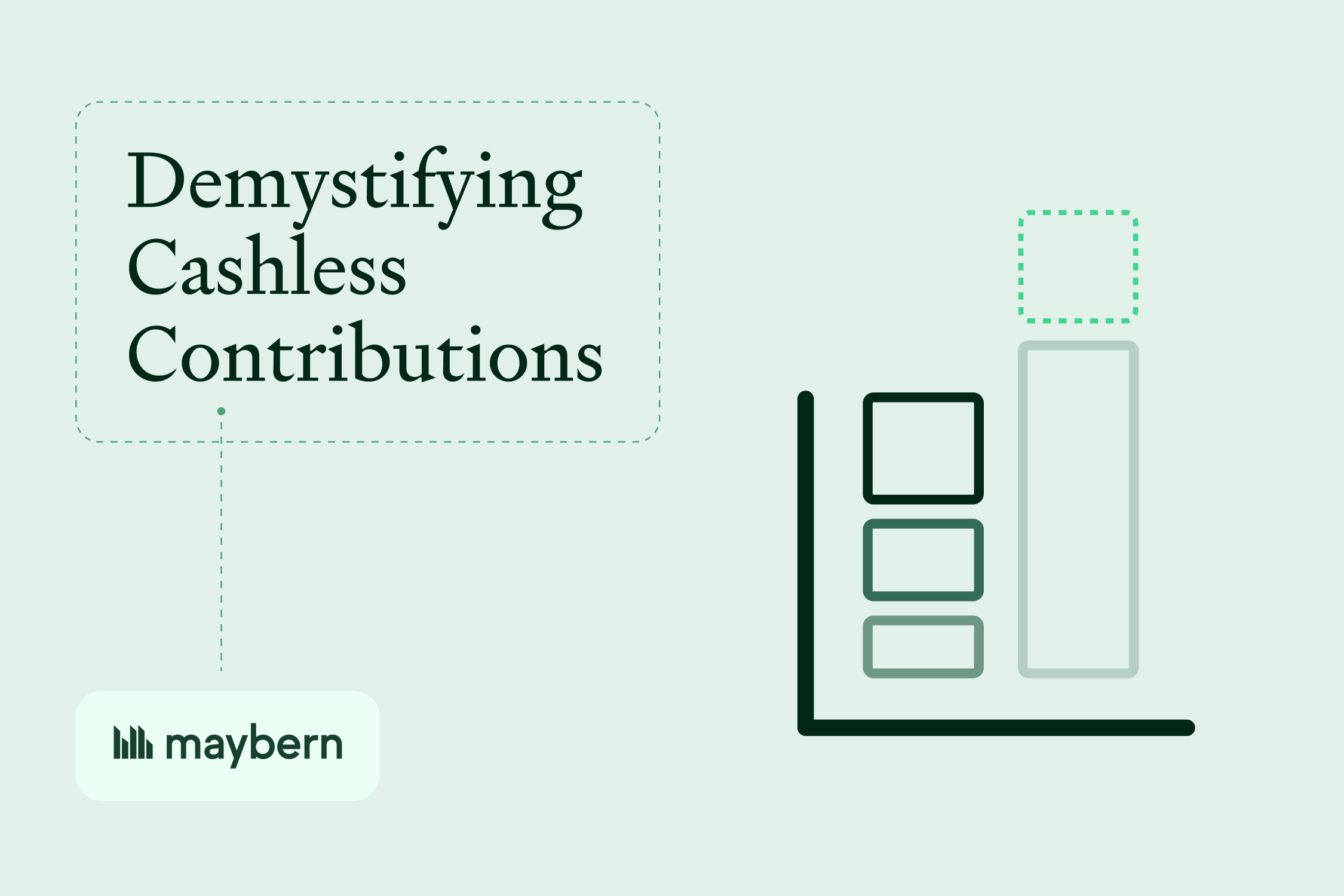
Demystifying Cashless Contributions – And Why Maybern Just Made Them Simple
Bella Zionts (Product Manager) enjoys creating meaningful solutions to thorny problems. Prior to joining Maybern, she was a founding member of a startup building fractional options trading and was an early employee at Webull.
Cashless contributions (also known as management fee waivers) are a powerful tax and liquidity tool for private fund managers. At their core, these contributions allow General Partners to reallocate a portion of their management fee income into a profits interest in the fund, offering liquidity, flexibility and the potential for favorable capital gains treatment.
This structure has become increasingly common in fund LPAs, especially as GPs seek to minimize upfront capital outlay while optimizing after-tax economics. A typical structure looks like this:
- LPs fund a portion of the GP’s capital commitment — the cashless contribution.
- In return, LPs receive a management fee offset equal to that contribution. The GP forfeits fee revenue that would likely be taxed as ordinary income, leaving LPs cash neutral.
- The GP receives a profits interest in the fund. If the fund performs, the GP earns an economic return on the contributed amount — potentially taxed at long-term capital gains rates.
It’s a compelling tradeoff: reduce taxable income in high-earning years, preserve individual liquidity, and gain exposure to fund upside without deploying cash.
The Catch: Operational Complexity
Despite their appeal, cashless contributions are notoriously difficult to manage operationally. Most firms still rely on a patchwork of spreadsheets and ad hoc advisor input to calculate and administer them. That process is high-stakes: missteps can lead to over-allocated carry, misclassified income, or worse. Common challenges include:
- Ambiguous LPA terms that require careful legal and accounting interpretation
- Manual tracking of offsets, contributions, available profits, and special allocations across capital events, fee postings, and distributions
- Error exposure, including GP overallocations or misclassified income that can lead to investor disputes, regulatory scrutiny, or failed IRS treatment of the profits interest
Even well-resourced managers often find themselves rerunning calculations manually. The burden typically falls on overextended controllers or outsourced admins unfamiliar with fund-specific nuances — a recipe for mistakes like missed offset caps or inaccurate allocations.
Maybern’s Approach
We’ve extended our platform to support cashless contributions natively — with the same rigor and control Maybern brings to every aspect of fund accounting:

The Bottom Line: Strategic Tools for the Modern Fund CFO
Cashless contributions are just one example of how GPs are evolving their fund structures to meet modern demands and optimize returns. Executing them with confidence requires more than technical knowledge and spreadsheets, it requires infrastructure that’s purpose-built for complexity.
Maybern gives CFOs a platform that transforms operational burden into strategic advantage, with automation, auditability, and confidence built in.
Ready to Modernize Your Fund Operations?
To see how we support this feature in action, schedule a demo.
Recommended Content

The $8 Billion Awakening: How One Fund Turned Administrative Struggles into Strategic Advantages
_COLOR%20GROUP%201%20(1).jpg)
Modernizing the Office of the Fund CFO: The Maybern Implementation Approach

Automated Hybrid Waterfalls: Reducing Risk to Realize Gains
